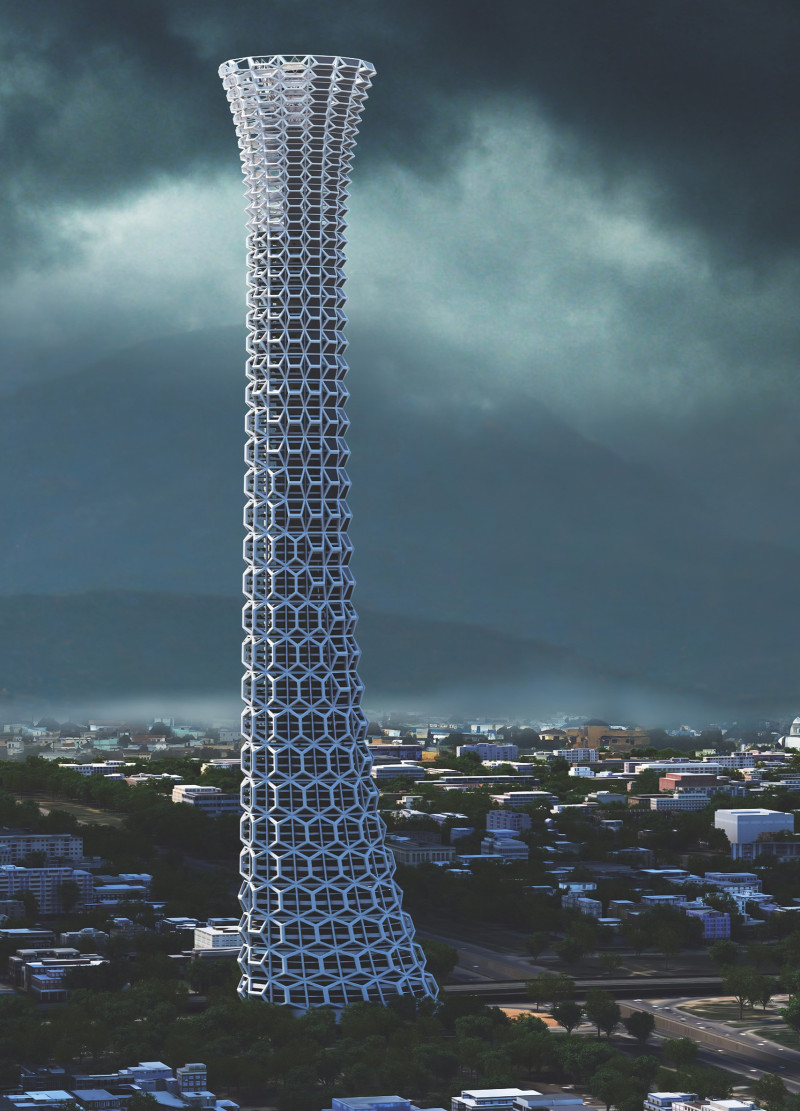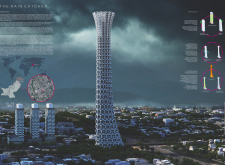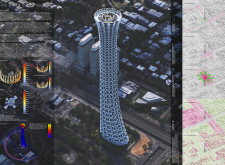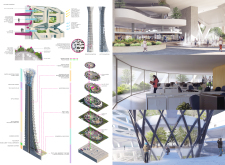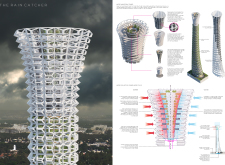5 key facts about this project
The Rain Catcher is an architectural design project situated in Lahore, Pakistan, strategically developed to address urban challenges such as water scarcity and climate change. The building is conceived as a multifunctional structure that captures rainwater and promotes sustainable urban living. Its innovative design integrates water harvesting techniques into a modern architectural framework, facilitating essential water resource management while fostering community interaction within the urban setting.
The project features a tall, tapering form that resembles natural structures, which optimize both functionality and aesthetics. The design promotes efficient water collection through a series of sloped surfaces and integrated drainage systems, allowing rainwater to be funneled into storage facilities. This approach not only serves a practical purpose but also highlights the potential of architecture as a tool for environmental stewardship.
Water Conservation Techniques
The architectural design includes dedicated systems for rainwater harvesting, effectively utilizing the local climate to maximize water collection. The structure is equipped with high-strength concrete walls that provide durability while supporting the needs of the building. Large glass facades are incorporated to ensure natural light penetrates the interior spaces, reducing the reliance on artificial lighting. Additionally, a green roof contributes to rainwater management and enhances the building’s thermal performance.
Community-Centric Layout
The layout of The Rain Catcher emphasizes community engagement through the integration of public spaces at the base of the structure. These areas are designed for social interaction, including gardens and multipurpose zones that host community events. Above these public spaces, the building houses office and commercial environments that promote collaboration and innovation. This blend of spaces cultivates a holistic urban ecosystem, encouraging residents and workers to participate in communal activities while raising awareness about sustainability.
In summary, The Rain Catcher stands apart from conventional architecture due to its focus on water conservation and community integration. By examining the architectural plans, sections, and designs, readers may gain deeper insights into the myriad strategies employed in this project. An exploration of this project reveals not only its contribution to sustainable architecture but also its role as a catalyst for positive change within urban environments.


